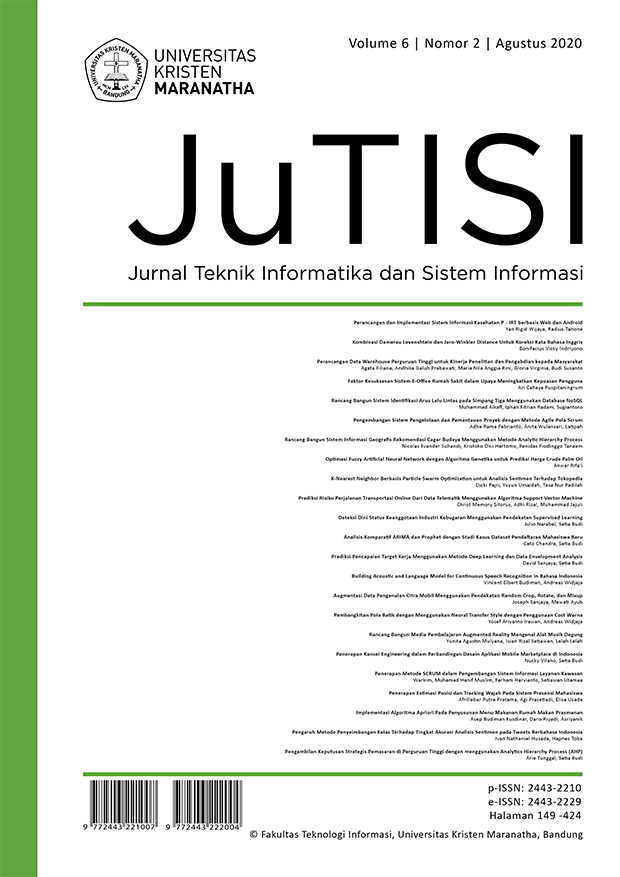Building Acoustic and Language Model for Continuous Speech Recognition in Bahasa Indonesia
Isi Artikel Utama
Abstrak
Here a development of an Acoustic and Language Model is presented. Low Word Error Rate is an early good sign of a good Language and Acoustic Model. Although there are still parameters other than Words Error Rate, our work focused on building Bahasa Indonesia with approximately 2000 common words and achieved the minimum threshold of 25% Word Error Rate. There were several experiments consist of different cases, training data, and testing data with Word Error Rate and Testing Ratio as the main comparison. The language and acoustic model were built using Sphinx4 from Carnegie Mellon University using Hidden Markov Model for the acoustic model and ARPA Model for the language model. The models configurations, which are Beam Width and Force Alignment, directly correlates with Word Error Rate. The configurations were set to 1e-80 for Beam Width and 1e-60 for Force Alignment to prevent underfitting or overfitting of the acoustic model. The goals of this research are to build continuous speech recognition in Bahasa Indonesia which has low Word Error Rate and to determine the optimum numbers of training and testing data which minimize the Word Error Rate.
Unduhan
Data unduhan belum tersedia.
Rincian Artikel
Cara Mengutip
[1]
V. E. Budiman dan A. Widjaja, “Building Acoustic and Language Model for Continuous Speech Recognition in Bahasa Indonesia”, JuTISI, vol. 6, no. 2, Agu 2020.
Terbitan
Bagian
Articles
This is an open-access article distributed under the terms of the Creative Commons Attribution-NonCommercial 4.0 International License (https://creativecommons.org/licenses/by-nc/4.0/) which permits unrestricted non-commercial used, distribution and reproduction in any medium.
This work is licensed under a Creative Commons Attribution-NonCommercial 4.0 International License.

